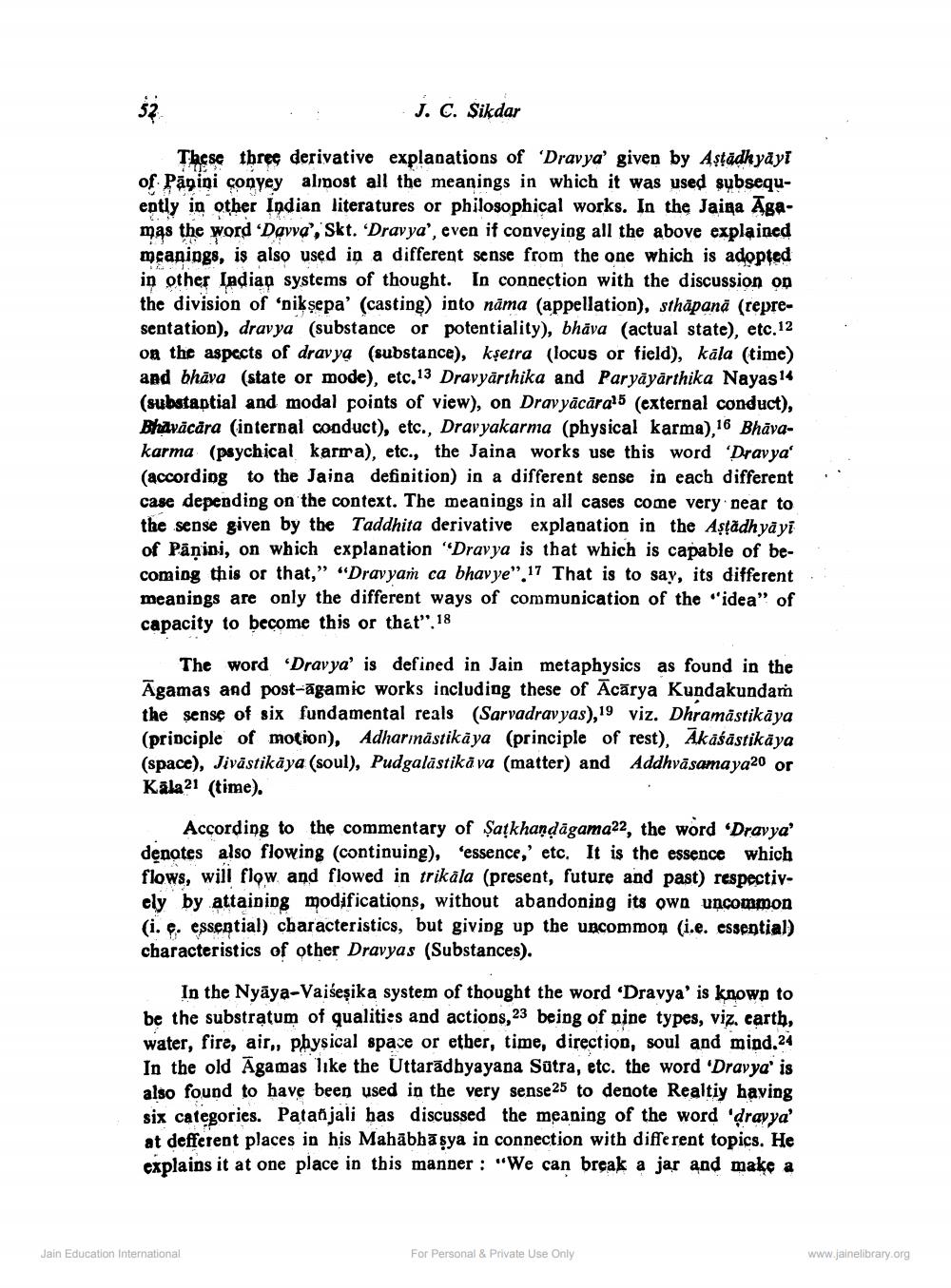________________
52
J. C. Sikdar
These three derivative explanations of 'Dravya' given by Astadhyay of Papini convey almost all the meanings in which it was used subsequently in other Indian literatures or philosophical works. In the Jaina Agamas the word 'Davva', Skt. 'Dravya', even if conveying all the above explained meanings, is also used in a different sense from the one which is adopted in other Indian systems of thought. In connection with the discussion on the division of 'niksepa' (casting) into nama (appellation), sthapana (representation), dravya (substance or potentiality), bhava (actual state), etc. 12 on the aspects of dravya (substance), kşetra (locus or field), kala (time) and bhava (state or mode), etc.13 Dravyarthika and Paryayarthika Nayas14 (substantial and modal points of view), on Dravyācāras (external conduct), Bhavācāra (internal conduct), etc., Dravyakarma (physical karma),16 Bhāvakarma (psychical karma), etc., the Jaina works use this word 'Dravya' (according to the Jaina definition) in a different sense in each different case depending on the context. The meanings in all cases come very near to the sense given by the Taddhita derivative explanation in the Aştadhyayi of Panini, on which explanation "Dravya is that which is capable of becoming this or that," "Dravyam ca bhavye" 17 That is to say, its different meanings are only the different ways of communication of the "idea" of capacity to become this or that", 18
The word 'Dravya' is defined in Jain metaphysics as found in the Āgamas and post-agamic works including these of Acarya Kundakundam the sense of six fundamental reals (Sarvadravyas),19 viz. Dhramāstikāya (principle of motion), Adharmästikäya (principle of rest), Akäsästikäya (space), Jivastikäya (soul), Pudgalastikā va (matter) and Addhväsamaya20 or Kala21 (time).
According to the commentary of Satkhaṇḍāgama22, the word 'Dravya' denotes also flowing (continuing), 'essence,' etc. It is the essence which flows, will flow and flowed in trikala (present, future and past) respectively by attaining modifications, without abandoning its own uncommon (i. e, essential) characteristics, but giving up the uncommon (i.e. essential) characteristics of other Dravyas (Substances).
In the Nyaya-Vaiśeşika system of thought the word 'Dravya' is known to be the substratum of qualities and actions, 23 being of nine types, viz., earth, water, fire, air,, physical space or ether, time, direction, soul and mind.24 In the old Agamas like the Uttaradhyayana Sutra, etc. the word 'Dravya' is also found to have been used in the very sense25 to denote Realtiy having six categories. Patanjali has discussed the meaning of the word 'dravya' at defferent places in his Mahābhasya in connection with different topics. He explains it at one place in this manner: "We can break a jar and make a
Jain Education International
For Personal & Private Use Only
www.jainelibrary.org




